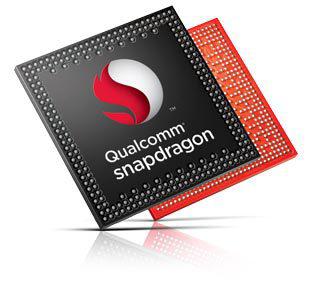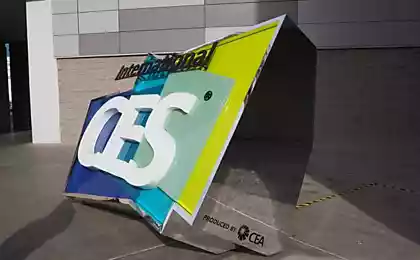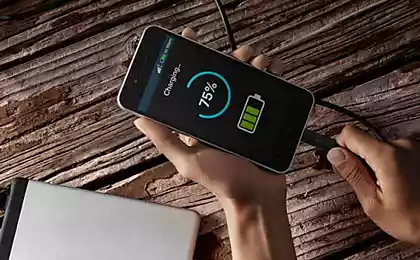896
Eight-mobile processors will come to market in the summer
Man went to bathe, and his invisible hand under the water and grabbed the kernel voice came: two plus or minus two? Plus minus any better, he thought, and said, plus two. Climbed out of the water - but he has 4 cores. I think: I'll climb a minute back, I say now minus two. Went back into the water, grabbed his hand again and again came the voice: four plus or minus four?

This anecdote I remember when I read the , that mass production of the first eight-processor California, Qualcomm will begin this summer. It seems that the invisible hand of the market firmly grabbed developers and does not let go.
The first on the conveyor Taiwanese factories Taiwan Semiconductor Manufacturing Company (TSMC) will rise Snapdragon 615 - chip for smartphones average. And by the end of the year Qualcomm promises to set up production of engines for future champions: 64-bit vosmiyadernika supporting 4G Snapdragon 810 and shestiyadernik < a href = "http://www.qualcomm.com/snapdragon/processors/808"> Snapdragon 808 , whose announcement состоялся April .
The main intrigue now - some of the top smartphones of the future first out of the water with eight cores. Perhaps it will be ожидаемый September Samsung Galaxy Note 4 - or will have to wait the traditional flagship premier in early 2015.
However, there is a slight chance that kvalkommovskie plans for the championship will break LG, which is developing its own vosmiyadernik titled Odin. Sound assumption that already upcoming premiere LG G3 will show his eight-version.
As for the processors, then to assess the news, it is worth divided into semantic parts:
▌s one hand, the race for the number of cores in smartphones repeats the story of the race for megapixels, the number of which is simply a long competition of advertising numbers - other things being equal, a certain limit for the number of pixels on the quality of the filming is not affected. The same is happening now with processors - no possibility of the number of cores, no increase in the discharge current software and the limited size of RAM really use modern smartphones do not allow.
▌s other - new features will pull the use of their software, and new requirements - must pull and iron. Somehow it works and progress, right?
▌i thirdly, new chips will be manufactured using the 20-nanometer manufacturing process. And it's really good news, because reduction process technology means saving the batteries overheating smaller and greater performance compared to dominate the market and above 22 nm chips.
As the race for the impracticality of nuclei does not negate the benefits of improving the production technology of processors by the news is still in favor kvalkommovskih innovation. Waiting for smartphones on the new chips.
Source: habrahabr.ru/post/223571/

This anecdote I remember when I read the , that mass production of the first eight-processor California, Qualcomm will begin this summer. It seems that the invisible hand of the market firmly grabbed developers and does not let go.
The first on the conveyor Taiwanese factories Taiwan Semiconductor Manufacturing Company (TSMC) will rise Snapdragon 615 - chip for smartphones average. And by the end of the year Qualcomm promises to set up production of engines for future champions: 64-bit vosmiyadernika supporting 4G Snapdragon 810 and shestiyadernik < a href = "http://www.qualcomm.com/snapdragon/processors/808"> Snapdragon 808 , whose announcement состоялся April .
The main intrigue now - some of the top smartphones of the future first out of the water with eight cores. Perhaps it will be ожидаемый September Samsung Galaxy Note 4 - or will have to wait the traditional flagship premier in early 2015.
However, there is a slight chance that kvalkommovskie plans for the championship will break LG, which is developing its own vosmiyadernik titled Odin. Sound assumption that already upcoming premiere LG G3 will show his eight-version.
As for the processors, then to assess the news, it is worth divided into semantic parts:
▌s one hand, the race for the number of cores in smartphones repeats the story of the race for megapixels, the number of which is simply a long competition of advertising numbers - other things being equal, a certain limit for the number of pixels on the quality of the filming is not affected. The same is happening now with processors - no possibility of the number of cores, no increase in the discharge current software and the limited size of RAM really use modern smartphones do not allow.
▌s other - new features will pull the use of their software, and new requirements - must pull and iron. Somehow it works and progress, right?
▌i thirdly, new chips will be manufactured using the 20-nanometer manufacturing process. And it's really good news, because reduction process technology means saving the batteries overheating smaller and greater performance compared to dominate the market and above 22 nm chips.
As the race for the impracticality of nuclei does not negate the benefits of improving the production technology of processors by the news is still in favor kvalkommovskih innovation. Waiting for smartphones on the new chips.
Source: habrahabr.ru/post/223571/
Global losses from friction in buses and trucks - fascinating figures
The smallest and fastest nanomotor: 1 mm, 18,000 RPM























